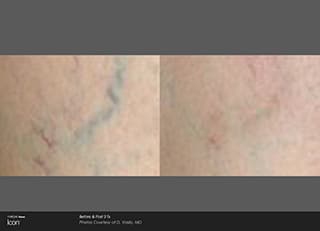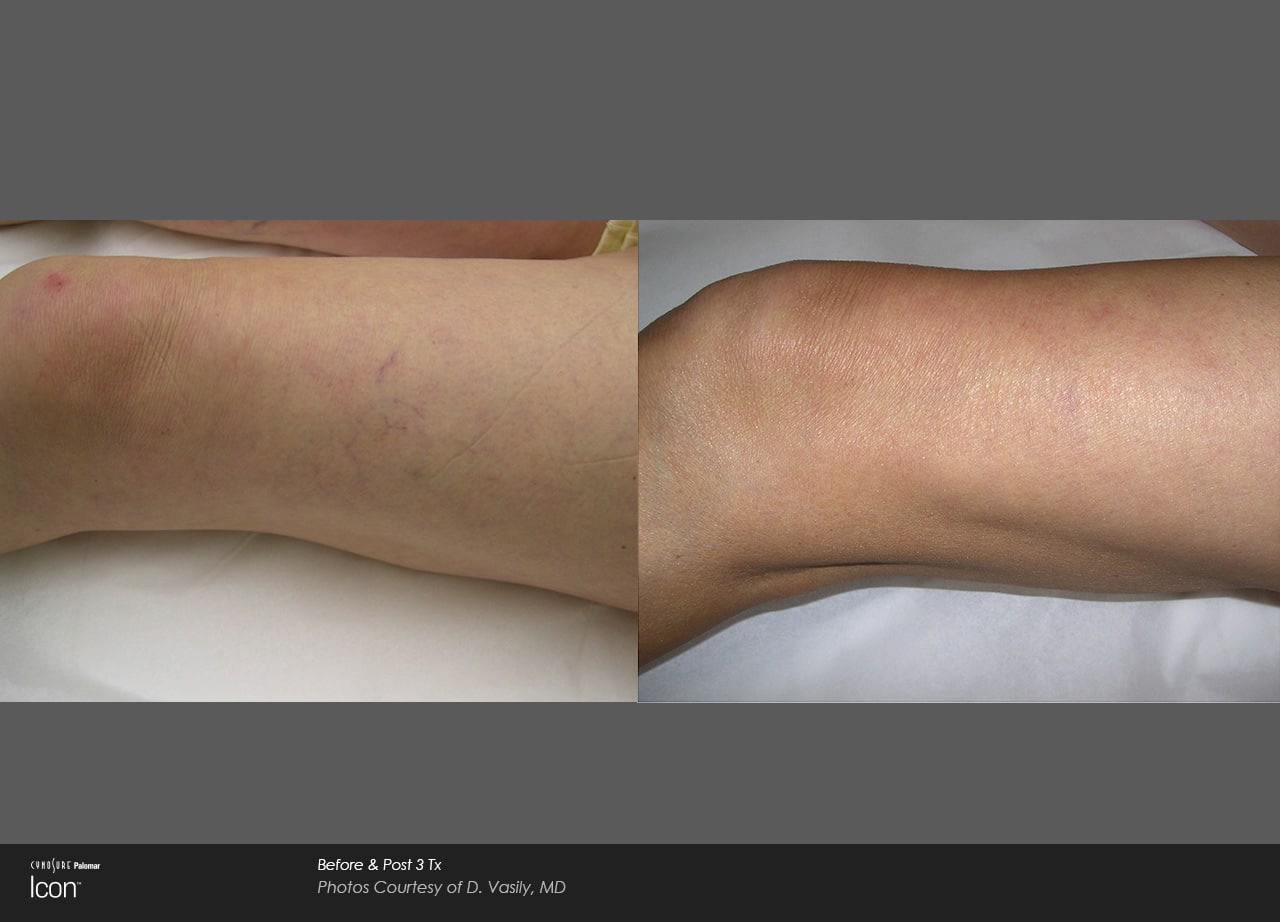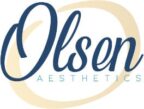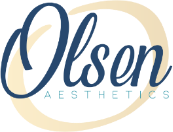Spider veins (telangiectasias) are small, thin blood vessels visible beneath the skin. They usually develop on the face or legs, and may look like a series of thin tree branches or strands of a spider web. Although most spider veins are only a cosmetic issue, for some people they can cause uncomfortable symptoms such as aching, burning, swelling and leg-cramping.
Spider veins are extremely common, affecting nearly half of the adult population of the United States. Many patients are bothered when spider veins develop on prominent areas such as the legs or face, and seek treatment to eliminate them. Our spider-vein treatment is highly effective and minimally invasive, offering aesthetically pleasing results without painful or lengthy downtime.
We offer an in-and-out procedure that is far less invasive that sclerotherapy or other spider vein or varicose vein removal treatments by using the ICON IPL laser to minimize the look and feel of small to medium spider veins. To know if you’re a good candidate for this style of treatment, please call our office to schedule a consultation at 301-251-2600.
Spider Vein Treatment Before & After Photos


Causes of and Risk Factors for Spider Veins
Spider veins develop from a backflow of blood in the veins. This condition, which results from damaged valves in the veins, is called "venous reflux." As blood collects in these veins, their walls distend. This increases the size of the veins, and makes them visible under the surface of the skin. Risk factors for developing spider veins include the following:
- Increasing age
- Hormonal changes
- Pregnancy
- Obesity
- Lack of exercise
- Sun exposure
Having a family history of spider veins is also a risk factor for developing them.
Diagnosis and Treatment of Spider Veins
Spider veins, which are diagnosed through a physical examination of the patient, an analysis of symptoms and, sometimes, diagnostic ultrasound, can be treated in a number of ways, all of which are minimally invasive.
Prevention of Spider Veins
Although there is no sure way to prevent spider veins, making certain lifestyle changes may reduce the risk of developing them. Lifestyle changes include losing weight, exercising regularly, and wearing support stockings and comfortable, flat shoes. It is also important to move the legs frequently, especially during long periods of sitting or standing in one place.
What are spider veins?
Spider veins are veins in which the valves have stopped functioning properly. When the valves of a vein are working correctly, they keep blood flowing in one direction. When they become damaged, they allow blood to flow backwards and pool, causing the walls of the vein to distend and enlarge. This is called venous reflux. When smaller, more superficial veins are involved, a web of red or blue thin branches appear on the surface of the skin, usually on the legs or face. These are referred to as spider veins.
What is the difference between spider veins and varicose veins?
Spider veins, although they result from the same type of vascular malfunction as varicose veins, are much less serious. Spider veins are a superficial manifestation of the problem. When veins become varicose, their walls have thinned considerably and blood has pooled in them so that they appear as palpable dark cords on the surface of the skin.
What are the risk factors for spider veins?
The causes of spider are not completely known, but many identifiable factors put an individual at risk. Risk factors for spider veins include:
- Increasing age over 50
- Smoking
- Family history of the disease
- Prolonged sitting or standing
- Hormonal changes
- Pregnancy
- Obesity
- Lack of exercise
- Sun exposure
Since hormonal changes increase the risk of developing spider veins there is a higher risk of developing the problem during puberty, menopause, pregnancy and while taking birth control medication. Since extra weight puts stress on veins, pregnancy involves a double risk. Because women go through greater hormonal fluctuations and may go through pregnancy, more women than men develop spider veins.
Can spider veins be dangerous?
Not usually. In and of themselves, varicose veins are not usually dangerous, but left untreated they may develop into varicose veins which are a more serious medical condition. Varicose veins may result in pain, fatigue, or inflammation of the skin and may be evidence of arteriosclerosis or clotting difficulties.
How are spider veins treated?
As with so many other medical conditions, weight loss and regular exercise are helpful in treating spider veins and particularly in keeping them from developing into varicose veins. Wearing compression stockings and avoiding leg crossing and sitting or standing for prolonged periods may also be useful.
Can spider veins be prevented?
Possibly. Since there is a hereditary component to the development of spider veins, they cannot be prevented in all cases. Keeping to a healthy diet and normal weight, applying sunscreen, exercising regularly, and avoiding long periods of sitting or standing may prevent the development of spider veins and will certainly contribute to good vascular health.
Ready to schedule a consultation?
Dr Olsen has 20 years of experience in aesthetics treatments and services and has the experience and tools to give you premium non-surgical results. Please call her office to schedule your consultation today 301-251-2600!



